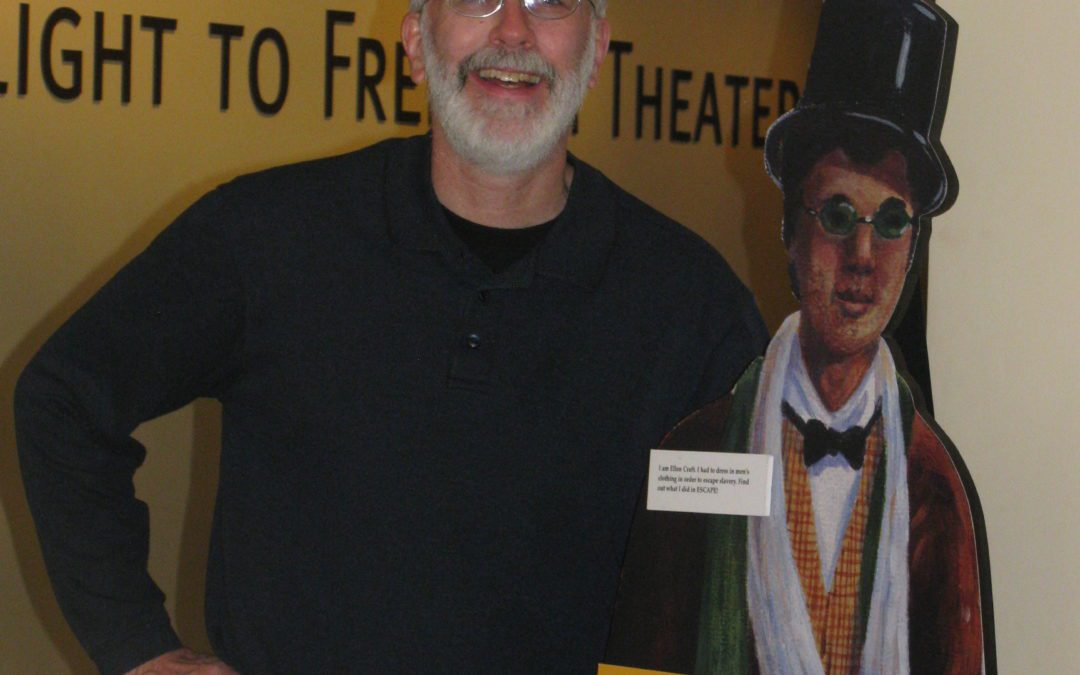
Ellen Craft, heroine of “The Vanishing Woman,” stands at the entrance to a wing of displays in the National Underground Railroad Freedom Center.
To many abolitionists, the Ohio River was the North’s Jordan River, providing access to the Promised Land. The Ohio River was the dividing line between North and South, making it an important crossing point for escaped slaves in the Underground Railroad. It is also an ideal location for the National Underground Railroad Freedom Center in Cincinnati, which is perched by the Ohio River and provides a great view of Kentucky, just across the water.
I was pleased to speak to a packed room at the Freedom Center this past weekend. It was the first time that I had a chance to talk about Ellen Craft, heroine of my new novel, The Vanishing Woman. I also talked about Henry “Box” Brown, the main character in my first novel, The Disappearing Man–and a man I first learned about in 2007 while visiting the Freedom Center.
I was reminded of how beautiful the Freedom Center is, with fantastic displays, moving imagery, lots of information, and some great films. Just one of the many stories that you will encounter in the museum is that of John Parker, an abolitionist, iron worker, and inventor who was one of the first African-Americans to patent his inventions before 1900. He patented a tobacco press in 1884 and a harrow in 1885.
Prior to the Civil War, Parker was an active abolitionist, ferrying escaped slaves across the Ohio River from Kentucky to Ohio, from slavery to freedom. His house in Ripley, Ohio, still stands and is a National Historic Landmark.
By Doug Peterson
Buy a copy of The Vanishing Woman


